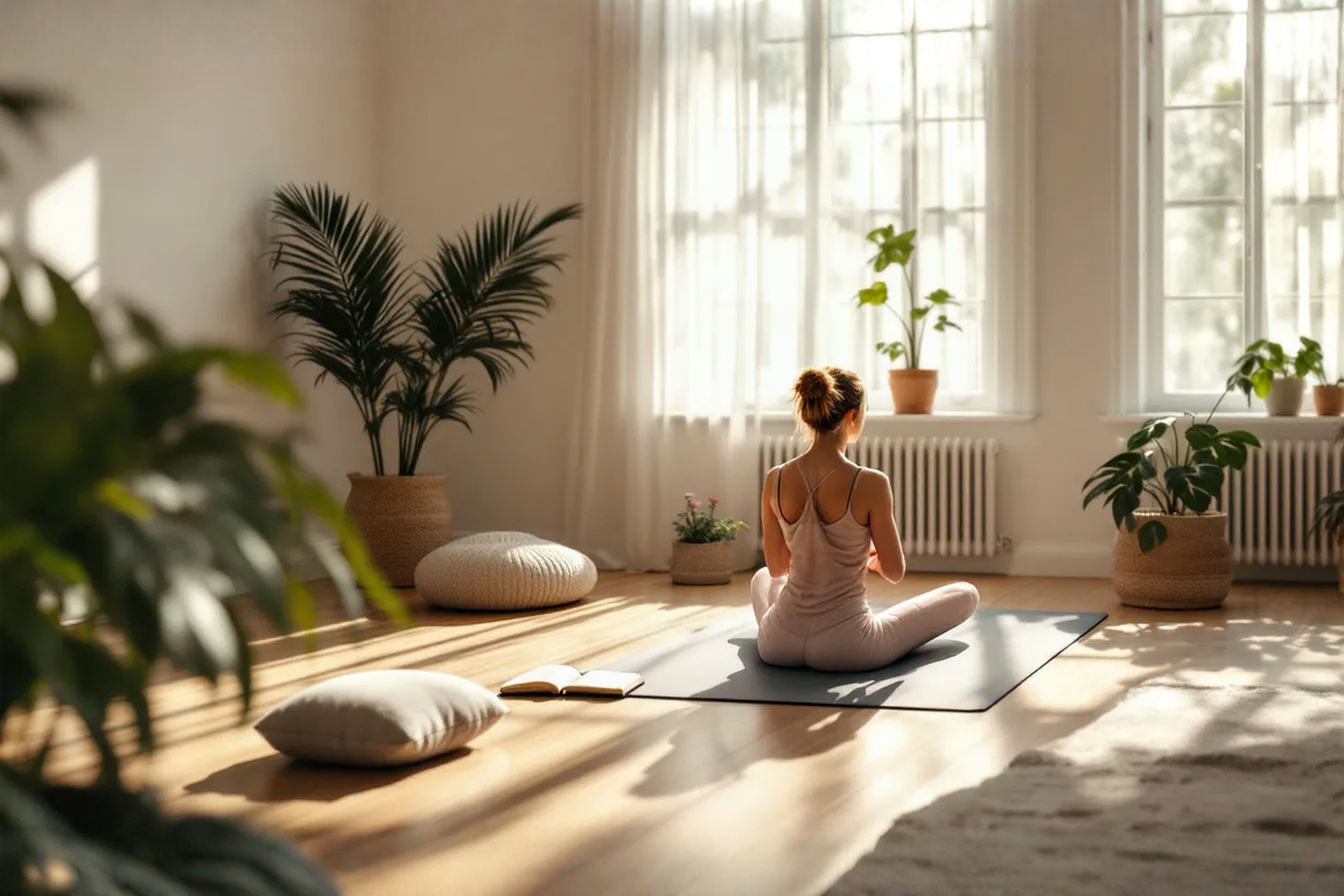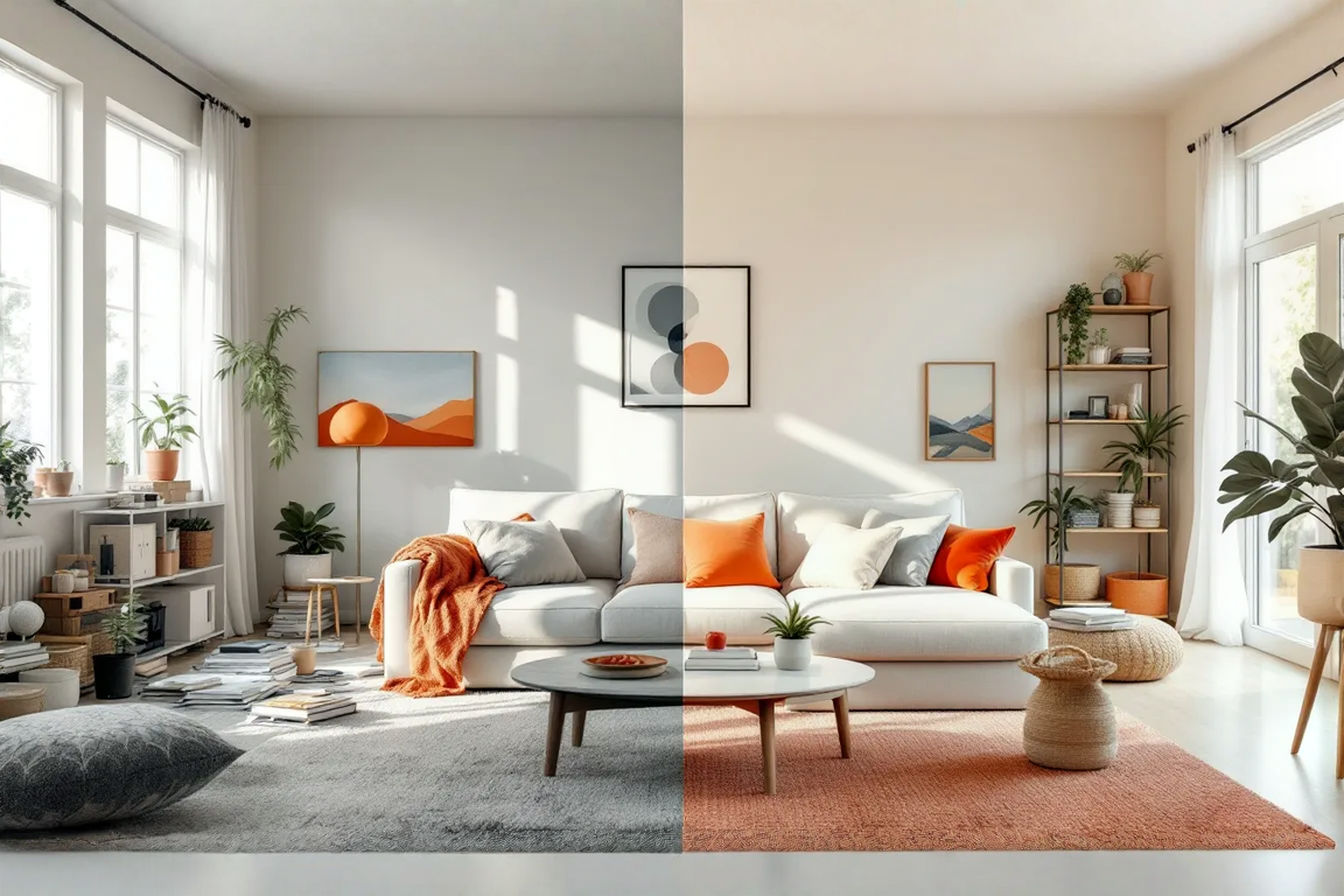This post may contain affiliate links. If you make a purchase through these links, we may earn a commission at no additional cost to you.
Creating clear boundaries between work and leisure areas is essential when your home serves both personal and professional needs. Without these boundaries, work can easily spill into your downtime, leaving you feeling like you’re always “on the clock.” Start by designating a specific area solely for work—ideally a separate room, but even a dedicated corner can be effective.
Your home office doesn’t need to be elaborate, but it should include basics like a comfortable chair, proper desk height, and adequate lighting to prevent physical strain. Position your workspace to maximize natural light while minimizing glare on screens. Consider using a room divider, bookshelf, or even a curtain to physically separate your work area from living spaces if you’re working with limited square footage.
While maintaining professional boundaries, don’t strip your workspace of personality. Adding carefully chosen personal touches—family photos, inspiring artwork, or meaningful objects—can make your work environment more motivating and pleasant. These elements remind you of your “why” during challenging workdays without becoming distractions.
The transition between spaces deserves attention too. Create a deliberate pathway or ritual that signals the shift between professional and personal modes. This might be as simple as closing a door, putting away work equipment at day’s end, or taking a short walk around the block to “commute” home.
For many households, especially those with children or multiple working adults, establishing clear visual signals when someone is “at work” helps prevent interruptions. This could be a closed door, a small sign, or even a light that indicates when you shouldn’t be disturbed except for emergencies.
Remember that dedicated spaces work best when everyone in the household respects and understands their purpose. Have open conversations about when these boundaries are firm and when they can be flexible.
Technology Integration for Work-Life Harmony
Technology serves as both the bridge and boundary between our personal and professional lives. When thoughtfully integrated into your home, tech tools can create seamless transitions while still maintaining necessary separation between work and downtime.
Smart home automation offers powerful ways to distinguish between work and personal modes. Consider programmable lighting that shifts from bright, cool tones during work hours to warmer, softer lighting for evening relaxation. This visual cue helps your brain recognize when it’s time to switch contexts. Motion sensors can automate this process, adjusting lighting and temperature based on which areas of the home you’re using throughout the day.
Digital boundaries are just as important as physical ones. Dedicated work devices—separate from personal phones and tablets—create a natural division between professional and personal digital lives. When this isn’t possible, use different user profiles or work-specific apps that can be disabled during personal time. Time-blocking apps with visual timers displayed prominently help maintain schedule discipline, showing clearly when work ends and personal time begins.
Voice assistants can manage transitions by announcing the end of work hours, starting evening routines, or even reading your schedule for the next day as a wind-down ritual. Consider displaying a shared family calendar screen in common areas that shows both work commitments and personal activities, allowing everyone to visualize the day’s flow.
For those managing remote teams or family coordination, digital communication hubs displayed on wall-mounted tablets can centralize important information without intruding on personal spaces. Position these in transition areas rather than relaxation zones to prevent work from visually entering rest spaces.
The most effective tech setups include kill switches—physical or digital methods to completely shut down work access during personal time. This might be as simple as a power strip that turns off all work equipment or as sophisticated as router settings that disable work accounts outside business hours.
Wellness-Focused Home Design
Your home environment significantly impacts your physical and mental wellbeing, which in turn affects both personal fulfillment and professional performance. A wellness-focused home design addresses this connection deliberately, creating spaces that restore your energy rather than deplete it.
Natural elements play a crucial role in this balance. Position your desk near windows to maximize natural light, which improves mood and reduces eye strain. A window view provides microbreaks for your eyes and mind throughout the workday. When natural light is limited, full-spectrum light fixtures can simulate daylight during work hours, transitioning to warmer tones during evening relaxation time. Consider displaying a large photograph or mural of natural scenery in your workspace—studies show even images of nature can reduce stress and improve focus.
Indoor plants serve as living visual dividers between work and personal spaces while improving air quality and providing psychological benefits. A green wall or vertical garden can become both a visual focal point and a natural air filter. For homes with limited floor space, hanging plants draw the eye upward, creating a sense of expanded space.
Movement areas are essential for physical health when you spend significant time at home. Dedicate a corner for exercise with a rolled yoga mat, resistance bands, or small equipment that can be attractively displayed rather than hidden away. This visual reminder encourages brief movement breaks throughout the day. A standing desk with an anti-fatigue mat provides immediate visual cues to shift positions regularly.
Create a dedicated mindfulness corner with comfortable floor cushions, a small fountain for soothing sounds, or a tabletop zen garden for tactile stress relief. This visually distinct area signals your brain that it’s time to shift from analytical thinking to restorative mental states. A wall-mounted pegboard system can display both work tools and wellness items, allowing the space to transform visually between modes.
Time Management Strategies for Home-Based Balance
Managing time effectively becomes both more challenging and more crucial when your home serves dual purposes. The right strategies, supported by visual cues, can help everyone in your household navigate the rhythms of a balanced day.
Creating visual schedules transforms abstract time commitments into concrete visual information. A large wall calendar or whiteboard displayed in a central location marks clear boundaries between work hours, family time, and personal activities. Color-coding these schedules—perhaps red for work tasks, blue for family activities, and green for personal time—makes these divisions immediately recognizable to everyone in the household.
Time-blocking becomes more effective when paired with visual timers. Consider an old-fashioned hourglass on your desk for focused work periods, or a decorative wall clock with colored tape marking different periods of the day. These analog time representations provide a physical dimension to time management that digital reminders often lack.
Transition rituals benefit from visual anchors throughout your home. A coat hook by the door where you hang your “work sweater” at day’s end, or a decorative box where you place your laptop when work is complete, creates visual signals that work has concluded. Some households use physical dividers that are moved to different positions throughout the day—a folding screen that’s opened during work hours and closed during family time serves as both functional divider and visual cue.
For families, creating a visual communication center helps navigate the complexity of multiple schedules. A simple system using magnetic icons on a refrigerator board can indicate when someone is in “do not disturb” work mode versus available for family interaction. Children especially benefit from these concrete visual signals rather than abstract explanations of why a parent cannot be interrupted.
A visual “reset routine” checklist posted near work areas reminds everyone to restore shared spaces to neutral states after use. This might include putting away work materials, adjusting lighting, or reconfiguring modular furniture—ensuring that work doesn’t visually dominate home spaces after hours.
Adaptable Spaces for Changing Needs
The most successful home environments evolve alongside your changing life circumstances and seasonal needs. Building adaptability into your space ensures it remains functional through life’s inevitable transitions.
Multipurpose furniture creates visually transformable spaces that serve different functions throughout the day. A dining table that adjusts in height can transition from breakfast surface to standing desk to dinner gathering space—with each height setting providing an immediate visual cue about the current purpose. Wall-mounted folding desks can disappear completely when not in use, removing work from visual awareness during personal time. Consider furniture with hidden storage compartments that keep work materials contained but accessible.
Modular room dividers offer adaptable visual boundaries that can be reconfigured as needed. A bookshelf on wheels, curtain systems on ceiling tracks, or expanding room dividers provide flexible ways to visually separate or combine spaces. These movable elements create a sense of spatial rhythm as they change position throughout the day or week.
Seasonal adaptations acknowledge that both work and personal needs shift throughout the year. A window seat might serve as a summer reading nook but transform into a winter workspace with better natural light. Document these seasonal layouts with photos displayed on a small digital frame, reminding household members of upcoming configurations and easing transitions between them.
Life-stage adaptations can be visualized through “future boards” displayed in planning areas of your home. These collage-style visual collections might include images representing upcoming needs—a teenager’s study area, a parent’s retirement hobby space—helping you make purposeful decisions about current space usage with future flexibility in mind.
Storage zones with clear visual organization systems ensure that components for different activities remain accessible but not intrusive. Transparent containers or photo labels make it easy to find and return items for various functions, while keeping currently unnecessary items from cluttering adaptable spaces.
Conclusion
Creating a home that successfully balances personal and professional needs is an ongoing journey rather than a one-time project. The most effective balanced spaces evolve through intentional design, technological integration, wellness considerations, time management strategies, and adaptable arrangements.
The key to success lies in recognizing that physical spaces profoundly influence mental states. When you create distinct environments for different aspects of your life, even within the same home, you help your brain make cleaner transitions between modes. Visual boundaries, deliberate time management systems, and wellness-promoting elements all contribute to this mental clarity.
Remember that balance doesn’t mean rigid separation or equal division of space. Instead, it means creating an environment where both personal growth and professional development can flourish without one consistently undermining the other. Some seasons may require more space devoted to work, while others might emphasize family or personal pursuits.
The most sustainable approach treats your home as a dynamic system that responds to your changing needs. Regular reassessment—perhaps quarterly—helps ensure your space continues to serve your current priorities. As you make these adjustments, involve everyone who shares the space, recognizing that balanced growth is both an individual and collective endeavor.
By thoughtfully designing your environment to honor both personal and professional aspects of life, you create more than just a functional space—you build a foundation for holistic wellbeing and sustainable success in all dimensions of your life.



